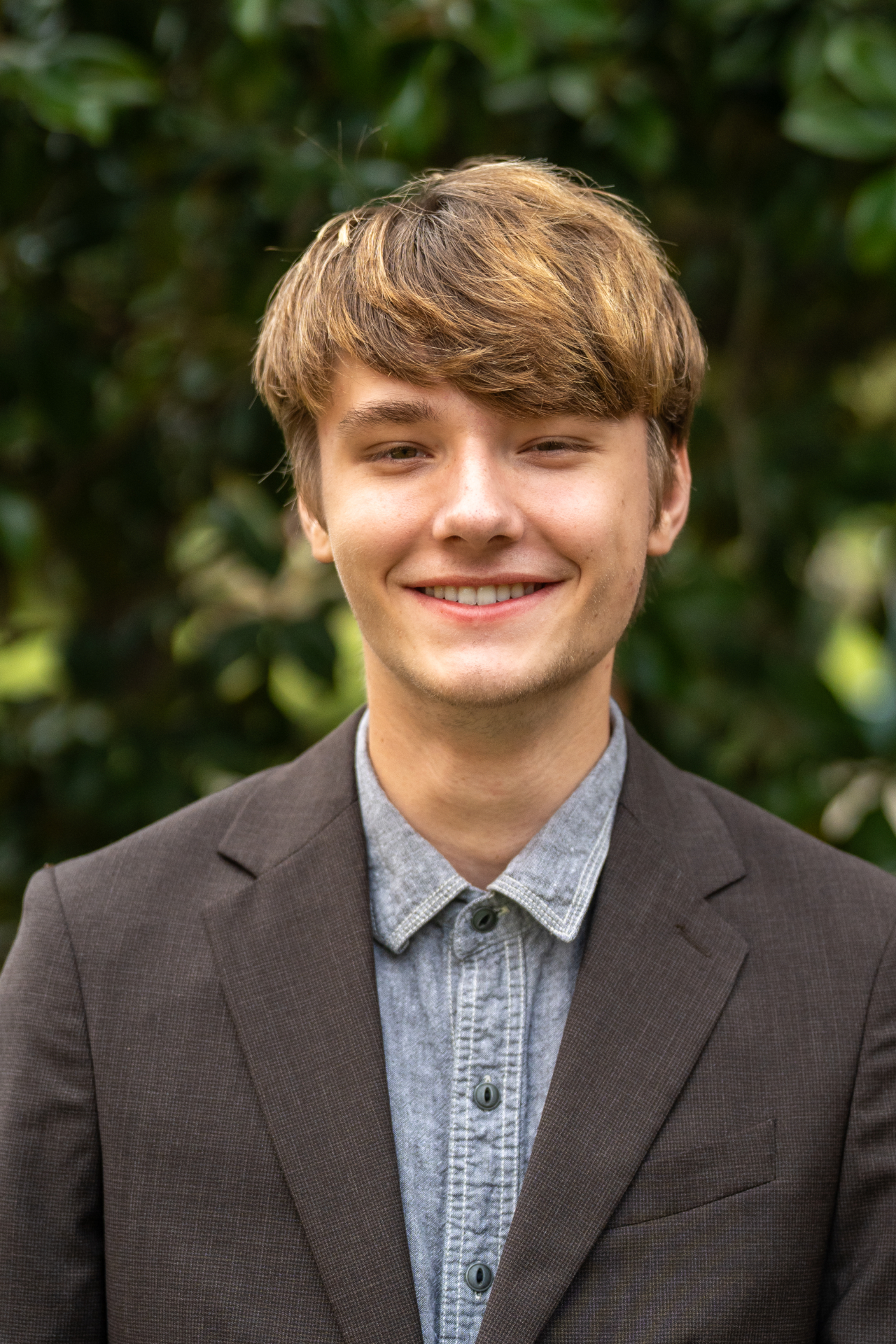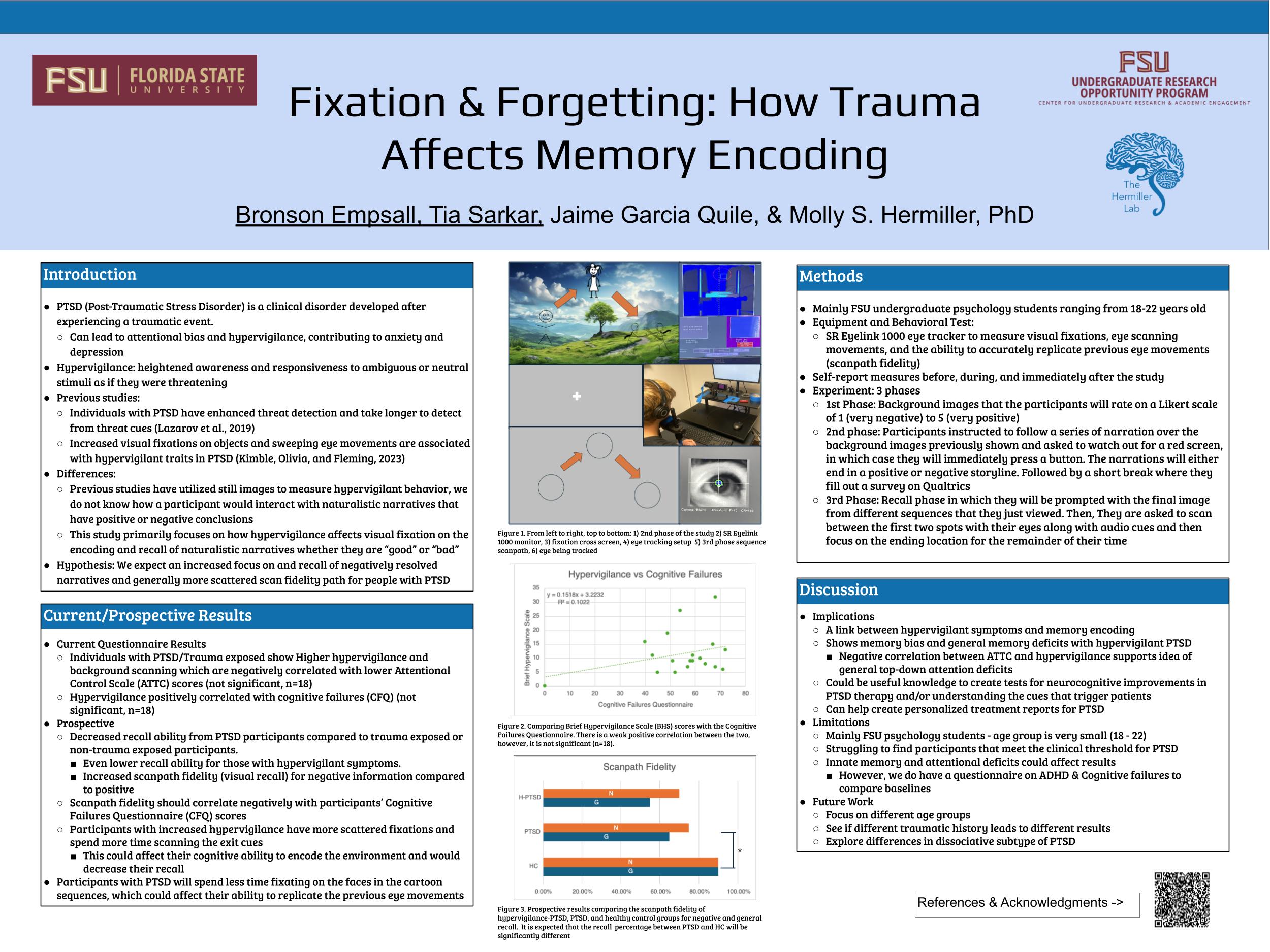Research Symposium
25th annual Undergraduate Research Symposium, April 1, 2025
Bronson Empsall Poster Session 3: 1:45 pm - 2:45 pm/ Poster #43

BIO
Greetings from this wrinkled cortex that calls itself Bronson! I'm a sophomore who loves learning about neuroscience. As someone with ADHD, I’m fascinated by the complex workings of memory—especially when it seems to elude me. I began my interest in trauma by managing the social media for SRQ Strong, a non-profit focused on creating trauma-informed community education close to my hometown. Working in the Hermiller lab, I've had the opportunity to study how it crosses over with memory formation and dive into literature on the brain. I'd love to keep exploring the brain further through a clinical lens and advocate for the neurodivergent movement. Beyond research, I'm the outreach coordinator for the NeuroUnity Alliance Society, the only neurodivergent club on campus. I’m also the founder and president of The PIT Metal & Punk Club, the music that powered the long hours spent working on this poster!
Fixation & Forgetting: How Trauma Affects Memory Encoding
Authors: Bronson Empsall, Molly S. Hermiller, PhDStudent Major: Behavioral Neuroscience
Mentor: Molly S. Hermiller, PhD
Mentor's Department: Psychology Mentor's College: Northwestern University Co-Presenters: Tvisha Sarkar
Abstract
This study examines how hypervigilant symptoms affect visual fixation on naturalistic
narratives and its correlation with memory encoding and recall. Although previous
research has shown the relationship between hypervigilance and increased fixation
points, it has not looked at naturalistic narratives that have positive or
negative outcomes or the relationship to memory encoding. Participants will fill
out self-report measures alongside a structured clinical interview. They will then perform a cognitive task that involves viewing a series of landscape images and rating them on a Likert scale while an eye-tracker records their eye movements. The next phase will prime them for hypervigilant behavior while encoding narratives with positive or negative conclusions over landscape images. They will complete a round of self-reports and then complete the final phase where participants are asked to reimagine and visually retrace images where they believe they belonged on screen. It is expected that participants with higher hypervigilance scores will remember the placement of negative resolutions better than others. They will also remember less and have more overall fixation points across the landscapes than their counterparts. The results could suggest that hypervigilance not only has an attention bias towards threatening stimuli, but a memory bias and general memory deficits. It would also fall in line with a dual process model of attention for PTSD, that deficits in top-down attention will lead to a larger focus on negative stimuli and the facilitation of threat detection, but deficits in bottom-up attention could lead to general distractibility from the task.
Keywords: PTSD, memory, eyetracking, hypervigilance, trauma


